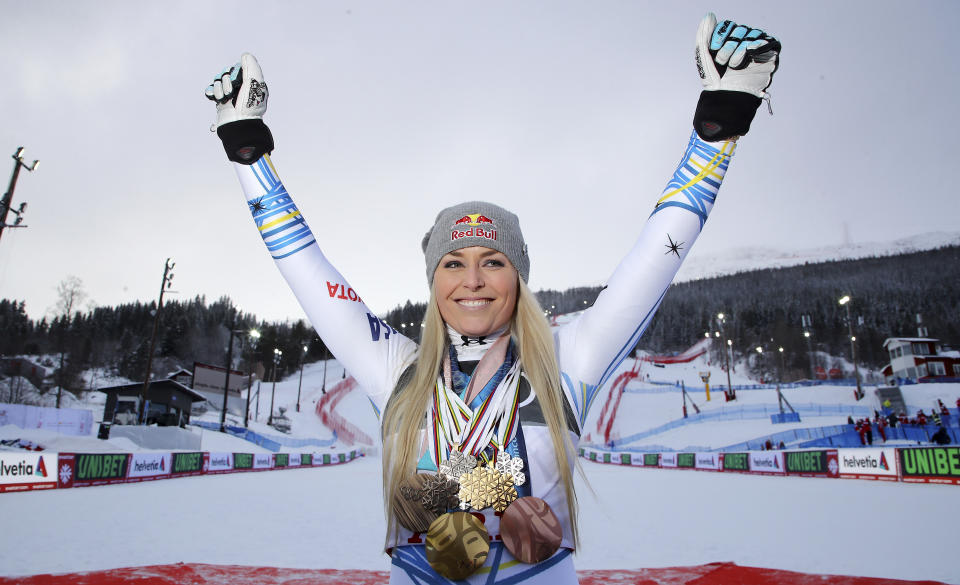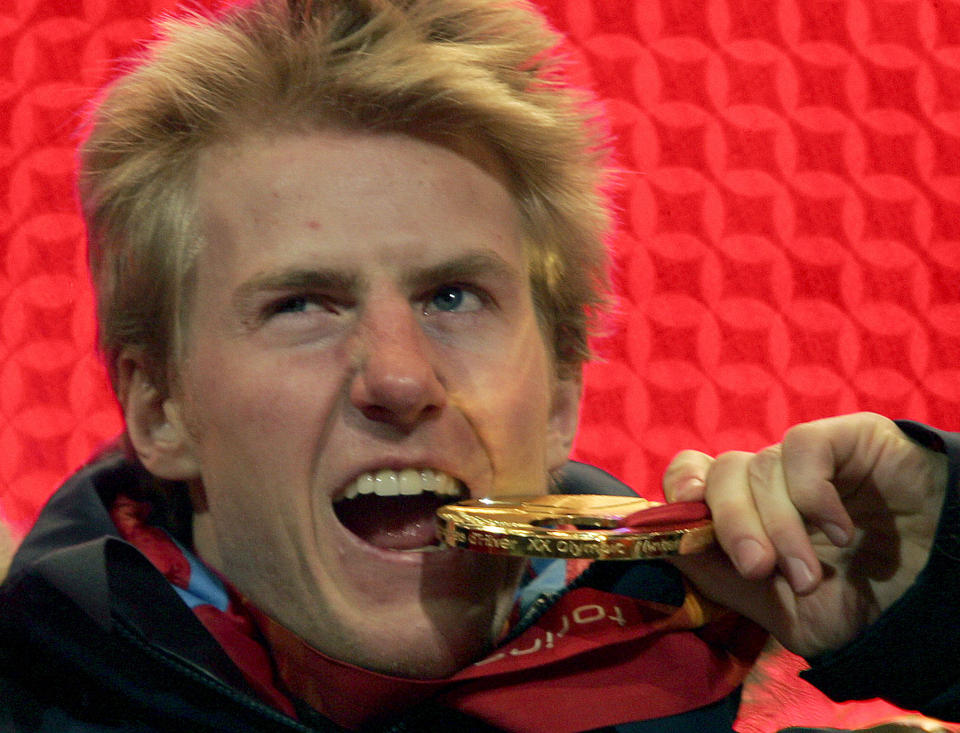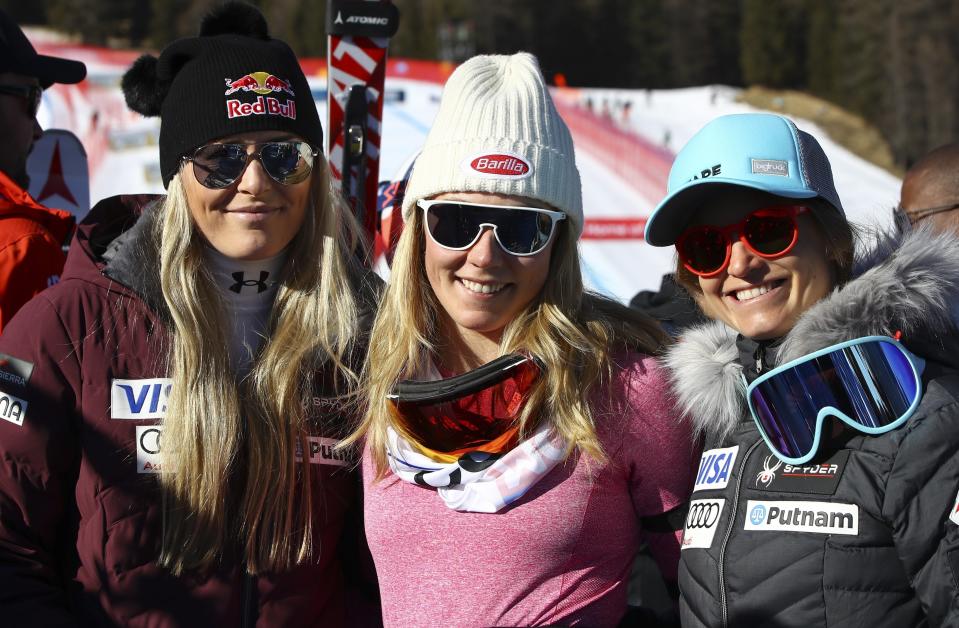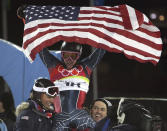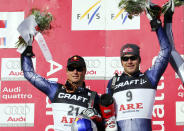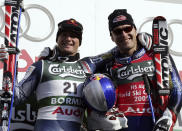Shiffrin's record follows 2 decades of US skiing success
It seemed like pure Hollywood fantasy when Robert Redford’s character beat the favored Austrian to win Olympic gold in the classic Alpine skiing film “Downhill Racer,” a movie released more than half a century ago.
These days, the U.S. ski team doesn’t need any special effects. It has the talent to win in a sport traditionally dominated by a handful of European nations.
When Mikaela Shiffrin broke Lindsey Vonn’s record for most women’s World Cup wins with her 83rd victory on Tuesday in a giant slalom, it was only the latest exploit by an American team that has been producing success after success on the circuit since Daron Rahlves and Bode Miller started it all off more than 20 years ago.
Then Vonn and Julia Mancuso burst onto the scene on the women’s circuit, Ted Ligety won a surprise Olympic gold medal long before he became the World Cup’s leading giant slalom skier, and Miller, Ligety, Vonn and Mancuso were all still racing when Shiffrin emerged as the team’s next — and eventually the world’s — top skier.
AMERICAN PIONEERS
Gretchen Fraser and Andrea Mead Lawrence won the first two Olympic slaloms for women in 1948 and 1952, respectively. Mead Lawrence also won giant slalom in 1952.
The first American man to win Olympic gold in Alpine skiing was Bill Johnson in downhill at the 1984 Sarajevo Games. Three days later, brothers Phil and Steve Mahre took gold and silver, respectively, in the slalom.
Phil Mahre also became the first American to win the overall World Cup title — considered by many within ski racing as the sport’s greatest prize — in 1981, ’82 and ’83.
Tamara McKinney was the first American woman to win the overall title in 1983.
It took more than two decades before another American won the overall, with Miller securing the first of his two titles in 2005.
DARON AND BODE
Before Miller started winning, it was Rahlves who emerged as a contender in downhill. The pair pushed each other to new heights, as Miller and Rahlves finished 1-2 in the downhill at the 2005 world championships in Bormio, Italy, where Miller also won the super-G.
A year later, a 21-year-old Ligety was the surprise winner of the combined — an event that adds the times from downhill and slalom runs — to become the first American man to win an Olympic Alpine skiing medal in a dozen years, since Tommy Moe won the downhill in 1994.
BODE THE REBEL
When Miller rebelled over the U.S. team’s refusal to let him sleep in his personal motor home rather than the team hotel, he left the team and formed his own personal squad, paying coaches out of his own pocket.
The move paid off as Miller won his second overall title with his personal team in 2008, the year that Vonn won the first of her four titles, and he crowned his career with gold in the 2010 Olympic combined.
In a sign of how Miller’s moves paved the way for future success, Shiffrin now has her own personal team and coaches, but her squad functions under the umbrella of the U.S. team and is funded by the American federation.
VONN-MANCUSO RIVALRY
Both born in 1984, Vonn and Mancuso started racing against each other as kids and kept their rivalry going until they both emerged on the World Cup circuit at about the same time.
It was Mancuso who won the bigger titles, first, though.
When Mancuso took two bronze medals at the 2005 worlds and Vonn finished fourth twice, Vonn — then known by her maiden name, Lindsey Kildow — was reduced to tears.
Mancuso also won the giant slalom at the 2006 Turin Olympics and then nearly won the overall title in 2007, before Vonn became the much more successful racer the next season and won three straight overall trophies.
Still, Vonn had to wait until 2010 for her first, and only, Olympic gold, when she won the downhill at the Vancouver Games.
Mancuso struggled with hip and back issues for the rest of her career but still ended with four Olympic medals, the most by an American woman.
LIGETY’S STYLE
While it was mainly his slalom skills that helped him to combined gold in 2006, it was giant slalom that became Ligety’s specialty.
Ligety won the season-long World Cup giant slalom title five times, took three straight golds at worlds in the discipline between 2011 and 2015 and claimed Olympic gold in GS in 2014. At one point during that stretch he was winning races by such huge margins that he became known as “Mr. GS.”
It was during that period that Ligety responded to new equipment rules by developing an eye-catching style whereby he arched rounder but smoother turns, inclining and leaning down so low that he swept the snow with his gloves.
KNOCK-ON EFFECT
With so many stars on the team, success trickled down to other racers like Andrew Weibrecht, Breezy Johnson and Ryan Cochran-Siegle.
Weibrecht won two Olympic medals in super G — bronze in 2010 and silver in 2014 — and Cochran-Siegle took silver in the same event at last year’s Beijing Games to match his mother, Barbara Ann Cochran, as an Olympic medalist.
Johnson, meanwhile, has followed Vonn as the team’s top downhiller with seven World Cup podium results.
Nina O'Brien was poised to break through before an ugly injury at last year's Beijing Olympics and is now regaining her form, and Paula Moltzan finished second behind Shiffrin for her first slalom podium last month.
___
Andrew Dampf is at https://twitter.com/AndrewDampf
___
More AP skiing: https://apnews.com/hub/skiing and https://twitter.com/AP_Sports

 Yahoo Autos
Yahoo Autos 
